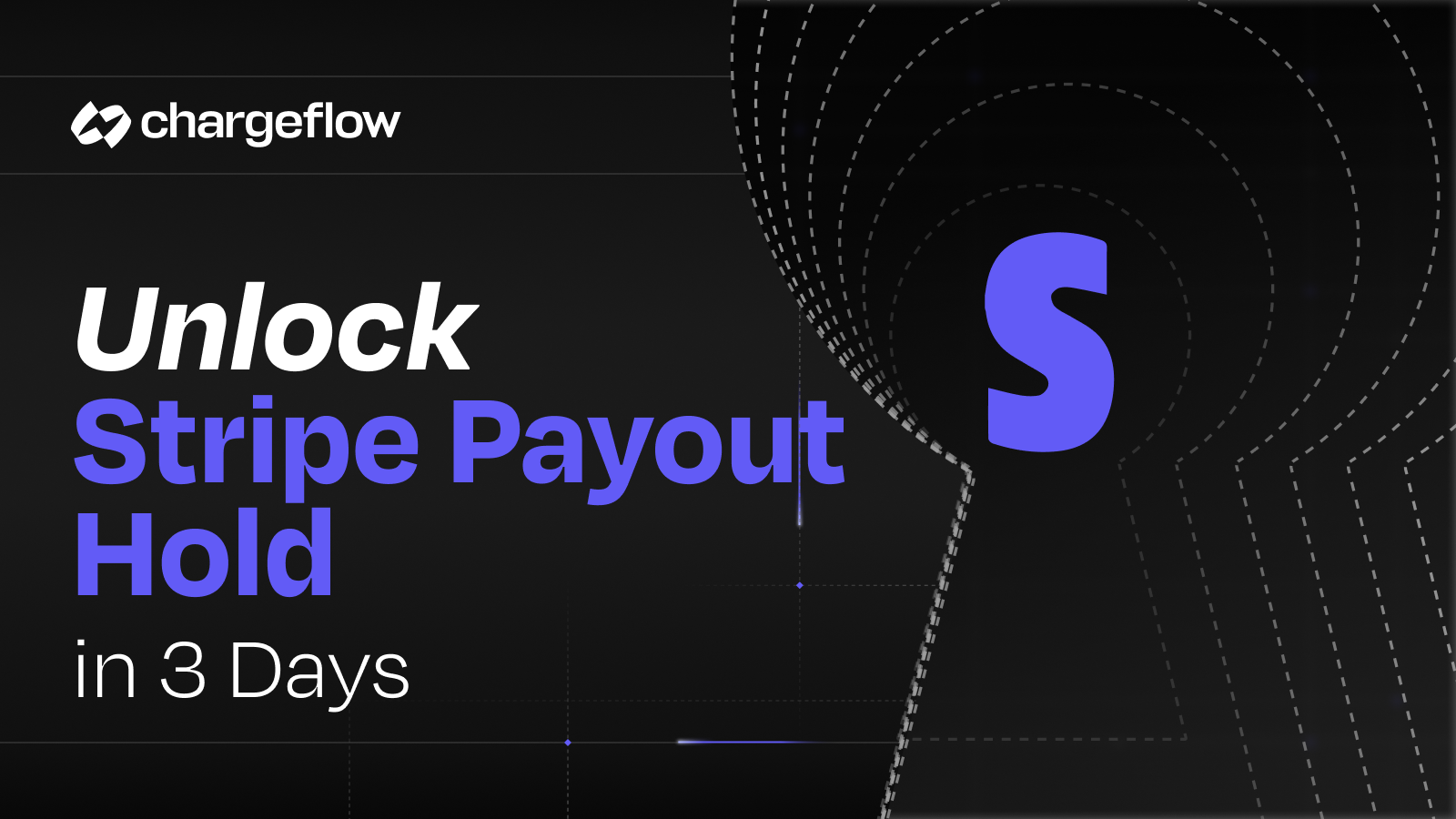Unveiling the Pros and Cons of Chargeback Prevention Alerts

Chargebacks?
No longer your problem.
Recover 4x more chargebacks and prevent up to 90% of incoming ones, powered by AI and a global network of 15,000 merchants.
Unveiling the Pros and Cons of Chargeback Prevention Alerts: Stay informed and protect your business! Find out how these alerts can save you money.
In today's fast-paced financial landscape, chargebacks have become a significant concern for businesses. But what exactly are chargeback prevention alerts, and why are they crucial?
Chargeback prevention alerts are advanced systems designed to proactively identify and mitigate potential chargebacks before they occur. These alerts serve as a safeguard for businesses, protecting them from financial losses and fraudulent transactions.
In this article, we will delve into the world of chargeback prevention alerts and explore their benefits and drawbacks. By the end, you'll have a clear understanding of how these alerts can impact your business and make informed decisions regarding their implementation.
So, let's dive in and uncover the key aspects of chargeback prevention alerts, discover their merits, analyze the potential demerits, and explore best practices for their effective implementation.
By the end of this guide, you'll be equipped with the knowledge to navigate the intricate world of chargeback prevention alerts with confidence.
Stay tuned as we embark on this enlightening journey together!
The Role of Chargeback Prevention Alerts
Chargeback Prevention Alerts play a crucial role in safeguarding businesses against fraudulent activities and minimizing financial losses. By providing real-time transaction monitoring, these alert systems act as an early warning system for suspicious activities. They enable businesses to take immediate action, mitigating the risk of chargebacks and potential fraud.
One of the key advantages of implementing Chargeback Prevention Alerts is the ability to detect and prevent fraud effectively. These alerts employ advanced algorithms and machine learning techniques to identify patterns and anomalies in transaction data.
By flagging potentially fraudulent activities, businesses can proactively address them, reducing the chances of chargebacks.
Furthermore, Chargeback Prevention Alerts help businesses reduce financial losses associated with chargebacks. By receiving instant notifications about disputed transactions, businesses can initiate investigations promptly, gather evidence, and respond to chargeback claims within the required timeframes. This proactive approach allows them to recover funds and minimize revenue loss.
Implementing Chargeback Prevention Alerts also leads to enhanced customer satisfaction. By detecting and preventing fraudulent transactions, businesses can ensure that legitimate customer transactions are not interrupted. This improves the overall shopping experience and instills confidence in customers, fostering trust and loyalty.
However, it's essential to strike a balance when relying on these alert systems. Over Reliance on automated systems can potentially result in false negatives, where legitimate transactions are flagged as fraudulent.
It can lead to customer inconvenience and frustration. Therefore, businesses should supplement alert systems with manual reviews and human judgment to avoid false positives and maintain a seamless customer experience.
Merits of Chargeback Prevention Alerts
As a service each one is focused in adding value to the niche it target, here are the merits a chargeback prevention service can offer:
1. Real-Time Transaction Monitoring
Chargeback prevention alerts offer real-time monitoring of financial transactions, providing businesses with immediate notifications when suspicious or fraudulent activities are detected. This enables proactive action to be taken, minimizing potential losses.
2. Early Warning System for Suspicious Activities
By implementing chargeback prevention alerts, businesses can establish an early warning system that alerts them to any unusual or potentially fraudulent activities. This allows for prompt investigation and mitigation measures to prevent chargebacks before they occur.
3. Reduction in Chargeback Fees
Chargebacks can result in significant financial losses for businesses, including chargeback fees imposed by payment processors. With chargeback prevention alerts in place, businesses can identify and address potential issues early on, reducing the likelihood of chargebacks and associated fees.
4. Improved Risk Management
Chargeback prevention alerts serve as a valuable tool for risk management. By monitoring transactions and identifying potential risks, businesses can take proactive steps to prevent fraudulent activities, safeguarding their financial well-being and reputation.
5. Minimization of False Positives
Chargeback prevention alerts employ sophisticated algorithms and data analysis techniques to differentiate between genuine transactions and potential fraudulent ones. This helps minimize false positives, reducing the chances of legitimate transactions being flagged erroneously and inconveniencing customers.
Demerits of Chargeback Prevention Alerts
Here, we have list down the possible cons of a chargeback prevention alerts service:
1. Potential Over Reliance on Automated Systems
Chargeback prevention alerts heavily rely on automated systems to detect and flag suspicious transactions. While automation can be efficient, it may lead to false positives or false negatives. Depending solely on automated systems can result in the rejection of legitimate transactions or the approval of fraudulent ones, potentially causing frustration for both businesses and customers.
2. False Negatives and Missed Fraudulent Transactions
Chargeback prevention alerts may not always catch every fraudulent transaction, leading to false negatives. Fraudsters are constantly evolving their tactics, making it challenging for alert systems to keep up.
Some sophisticated fraudulent activities can slip through the cracks, leaving businesses vulnerable to financial losses and reputation damage.
3. Increased Operational Costs
Implementing chargeback prevention alerts often requires investments in advanced technologies, software, and staff training. Businesses may need to allocate additional resources to manage and maintain these systems effectively.
The upfront and ongoing costs can be significant, especially for smaller businesses operating on tighter budgets.
4. Customer Friction and Inconvenience
Chargeback prevention alerts can occasionally trigger false alarms, resulting in customer friction and inconvenience. Legitimate transactions may be flagged, requiring customers to provide additional information or go through extra verification steps.
It can lead to delays, frustrations, and even potential loss of sales if customers abandon their purchase due to the perceived hassle.
5. System Compatibility and Integration Challenges
Integrating chargeback prevention alert systems with existing payment processors and acquirers can present technical challenges. Ensuring seamless compatibility and smooth data flow between different systems may require additional time and effort.
Any disruptions or glitches in the integration process can impact the efficiency of chargeback prevention alerts, hindering their effectiveness.
Best Practices for Implementing Chargeback Prevention Alerts
Best Practices for Implementing Chargeback Prevention Alerts:
1. Choose a Reliable Alert System Provider
Selecting a reputable alert system provider is crucial for effective chargeback prevention. Look for providers with a proven track record and positive customer reviews.
2. Customize Alert Thresholds and Parameters
Tailor the alert system to your business needs by setting appropriate thresholds and parameters. This ensures that you receive alerts for transactions that fall within your predefined risk tolerance levels.
3. Train Staff on Alert Management
Properly educate your staff on how to handle chargeback prevention alerts. Provide comprehensive training on identifying suspicious activities, verifying transactions, and taking appropriate action when an alert is triggered.
4. Regularly Review and Update Alert Rules
Keep your alert rules up to date by regularly reviewing and refining them. Stay informed about the latest fraud trends and adjust your rules accordingly to stay ahead of emerging threats.
5. Collaborate with Payment Processors and Acquirers
Establish strong communication and collaboration with your payment processors and acquirers. They can provide valuable insights and assistance in optimizing your chargeback prevention alerts based on their expertise and industry knowledge.
Prevent Hectic and TIme Consuming Chargebacks with Chargeflow
Chargebacks can be a major headache for any eCommerce merchant. They're time-consuming, expensive, and can damage your reputation. But there's a way to prevent them: Chargeflow.
Chargeflow is a chargeback management system that uses machine learning and artificial intelligence to help merchants fight chargebacks. Chargeflow automates the process of disputing chargebacks, and it can help merchants recover more money from chargebacks.
Here are some of the ways Chargeflow can help you prevent hectic and time-consuming chargebacks:
- Automated dispute management: Chargeflow automatically disputes chargebacks on your behalf. You don't have to do anything.
- Machine learning: Chargeflow uses machine learning to predict which chargebacks are most likely to be successful. This helps you focus your time and resources on the most important cases.
- Artificial intelligence: Chargeflow uses artificial intelligence to generate custom dispute responses. This helps you make the strongest possible case to the cardholder's bank.
- Integrations: Chargeflow integrates with major eCommerce platforms, including Shopify, WooCommerce, and Magento. This makes it easy to get started with Chargeflow.
Chargeflow is a powerful tool that can help you fight chargebacks and protect your bottom line. If you're looking for a way to reduce the number of chargebacks you receive and recover more money from the ones you do receive, Chargeflow is a great option.
Here are some of the benefits of using Chargeflow:
- Reduced chargeback rates: Chargeflow can help you reduce your chargeback rates and reduce risk profiling of your merchant account.
- Increased chargeback recovery rates: Chargeflow can help you recover more money from chargebacks, protecting your revenue and business reputation.
- Improved customer satisfaction: Chargeflow can help you improve customer satisfaction by resolving chargebacks quickly and efficiently.
- Reduced administrative costs: Chargeflow can help you reduce the administrative costs associated with chargebacks, such as the cost of disputing chargebacks and the cost of lost sales.
If you're an eCommerce merchant, Chargeflow is a valuable tool that helps you protect your business from chargebacks.

Chargebacks?
No longer your problem.
Recover 4x more chargebacks and prevent up to 90% of incoming ones, powered by AI and a global network of 15,000 merchants.






























.png)








